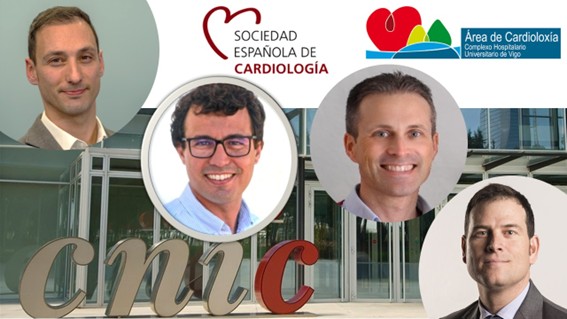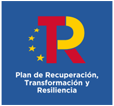NEJM: A drug used to treat diabetes improves the prognosis of patients undergoing cardiac valve intervention
The DapaTAVI study, conducted in 39 Spanish hospitals and coordinated by the CNIC, marks a breakthrough in cardiovascular research and could transform the treatment of these patients
A drug used to treat diabetes improves the prognosis of patients with aortic stenosis treated by transcatheter aortic valve implantation (TAVI). The results of a new clinical trial including 1,250 patients shows that medication with dapagliflozin after this treatment reduces the rates of death and hospital admission attributed to heart failure over a one-year follow-up. The trial was coordinated by the Centro Nacional de Investigaciones Cardiovasculares (CNIC) and Hospital Álvaro Cunqueiro de Vigo, and the study results are published in The New England Journal of Medicine.
Cardiovascular disease is the leading cause of death worldwide and also accounts for the largest proportion of global health expenditure. Within the spectrum of cardiovascular conditions, a significant health concern is posed by diseases affecting the heart valves. Of particular concern is stenosis (narrowing) of the aortic valve, a condition estimated to affect between 3% and 5% of people over the age of 75 in Spain and across Europe, or approximately 8 million people worldwide.
Aortic stenosis is a degenerative disease that typically progresses slowly, narrowing the aortic valve opening through which blood is pumped from the heart to the rest of the body. As a result, the heart muscle has to work harder, and this can lead to heart failure, angina, or even sudden cardiac death due to malignant arrhythmias.
One of two principal investigators on the clinical trial was Dr. Sergio Raposeiras-Roubín, a cardiologist at Hospital Universitario Álvaro Cunqueiro de Vigo and a scientist at the CNIC and at Instituto de Investigación Sanitaria Galicia Sur (IISGS). Describing the study, he explains that, “Traditionally, this condition has been treated by heart valve replacement surgery. But the surgical risk for elderly patients is very high, and this limits their access to this intervention.” Dr. Raposeiras-Roubín is presenting the results of the trial at the American College of Cardiology (ACC) congress in Chicago.
In recent years, surgical intervention has been superseded by the less invasive TAVI procedure. In this procedure, a new valve is implanted through a catheter inserted into an artery, most commonly one of the femoral arteries in the groin area, thus avoiding the trauma of major surgery. Dr. Raposeiras points out that, “Since its introduction, TAVI has increased the life expectancy of many elderly patients with severe aortic stenosis, but these patients remain at high risk of heart failure due to the underlying deterioration of their cardiac function.”
Before the new study, there were no treatments available to improve the prognosis of patients recovering after TAVI.
Both dapagliflozin and the related medication empagliflozin work by inhibiting sodium-glucose cotransporter 2 (SGLT2) and were originally developed as treatments for diabetes. However, they are also effective treatments for heart failure and have become key elements of the treatment of this condition.
Despite the efficacy of these drugs, the mechanism through which SGLT2 inhibitors improve the prognosis of heart failure patients has remained a mystery. Dr. Borja Ibáñez—CNIC Scientific Director, cardiologist at Fundación Jiménez Díaz, group leader in the Spanish cardiovascular research network (CIBERCV), and the scientific coordinator of the trial—explains that, “Given the medical importance of this question, we have worked on it extensively, and we recently demonstrated that these drugs increase the energetic capacity of the heart by altering how the myocardium [heart muscle] utilizes nutrients to generate energy.” That study was published recently in JACC: CardioOncology.
Although patients with aortic stenosis frequently progress to heart failure, they have generally been excluded from clinical trials investigating the benefits of SGLT2 inhibitors. Dr. Raposeiras adds that, “Those trials also included minimal representation of elderly patients.”
This is precisely what inspired Dr. Ibañez’s team at the CNIC to conduct a clinical trial in the specific population of elderly patients treated with TAVI.
DapaTAVI is an independent trial conducted in Spain with no funding from the pharmaceuticals industry at 39 Spanish hospitals. The trial included 1,250 patients with severe aortic stenosis who were recovering after TAVI and at high risk of heart failure.
Half of the study participants were treated with dapagliflozin after the TAVI procedure, while the remaining half received standard care. Analysis at the end of one year of follow-up showed that the rates of death and hospital admission due to heart failure were significantly lower in the dapagliflozin-treated group.
Summarizing the findings, second principal investigator Dr. Ignacio Amat-Santos—an interventional cardiologist at Hospital Universitario de Valladolid and a CNIC research scientist—says that, "This study demonstrates that we can further improve the prognosis of patients treated with TAVI, an especially vulnerable patient group.”
CNIC General Director Dr. Valentín Fuster, a coinvestigator on the trial, underlines that, “The results of DapaTAVI will have an enormous impact on a growing number of patients and will help to extend their life expectancy with improved quality of life.”
"DapaTAVI,” notes Dr. Ibáñez, “is an integral part of the CNIC’s strategy begun seven years ago to lead pragmatic clinical trials with no pharmaceutical industry involvement and with the goal of transforming global clinical practice.” Dr. Xavier Rosselló, of hospital son Espases de Palma de Mallorca and a CNIC scientist, adds that “These clinical trials, managed from the CNIC Clinical Trials Coordination Unit, are a demonstration of Spanish scientific leadership, as well as the commitment of the Spanish medical community.”
The investigators conclude that DapaTAVI marks a breakthrough in cardiovascular research and could transform the treatment of these patients throughout the world.
The study received funding from the Carlos III Health Institute, the Spanish Society of Cardiology, the Galician Society of Cardiology, and the Castilla y León Regional Health Authority.











